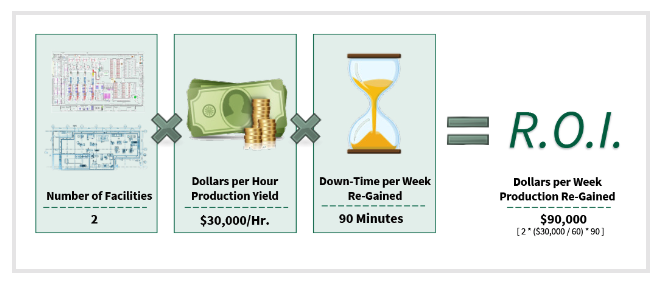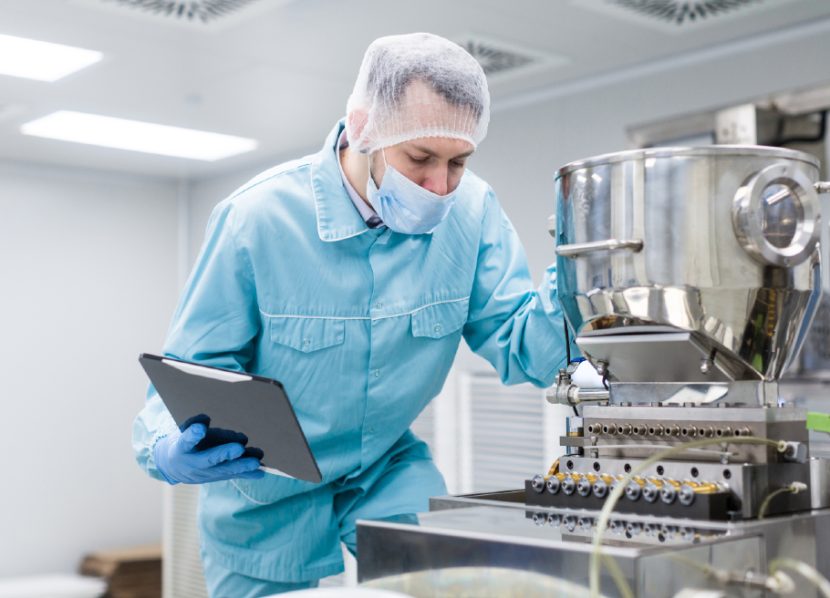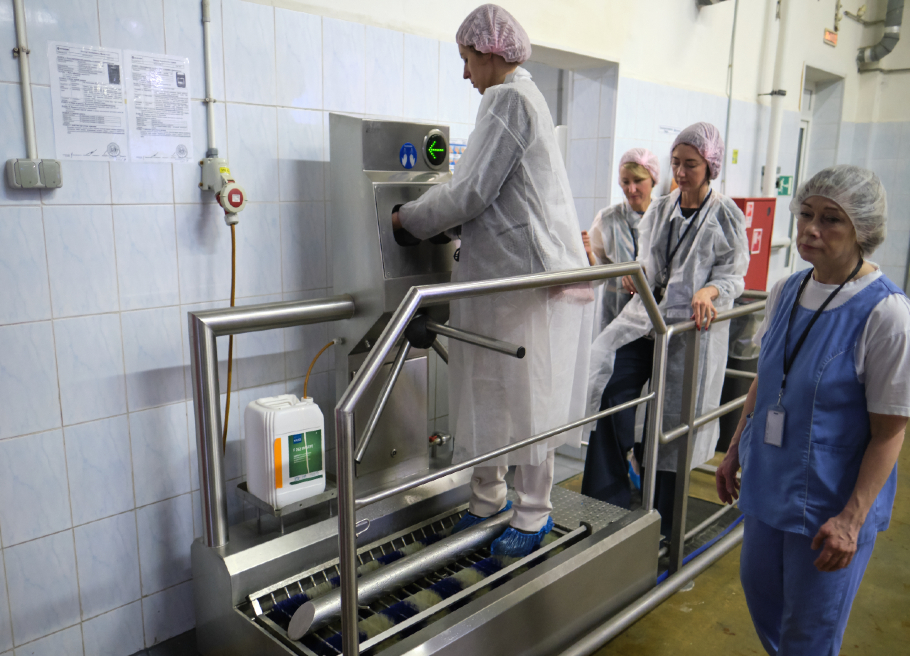Building the Case to Digitize Your Food Safety Testing
By David Hatch
We hear a lot about the efficacy of food safety testing. The benefits of having a well-rounded and robust testing program are many and well–documented. We also hear that the industry has chosen “not to compete on food safety,” just as the healthcare industry has chosen to do with treatment programs. Sharing advances and treatment program outcomes provides an immense boon to healthcare practitioners. With the advent of a major digital transformation – the electronic health record – the healthcare industry enabled advanced information sharing that has saved lives and mitigated disastrous outcomes.
In the same way, food safety teams are experiencing a similar renaissance with a new digital transformation. The advent of digitized and automated food safety testing programs can help food producers to avoid major disruption. But unlike the human healthcare industry experience, food producers must also focus on production and meeting objectives within an incredibly tight financial margin. This is the crux for building a case to digitally transform food safety testing programs.
Food safety issues not only present health risks, but more commonly they can and do become very expensive from an operations standpoint. Obtaining leadership buy-in for digitizing food safety testing and sanitation programs can be difficult, but can also reap many benefits.
For example, in a production environment, every hour of downtime for an impacted production line or piece of machinery equates to thousands (or more) dollars lost. The losses, when added up, are staggering:
- Cost of raw materials – the ingredients and supplies used to produce a contaminated run were wasted.
- Production costs – the expenses related to powering, operating and maintaining related production lines have not yielded results.
- Labor costs – line workers, maintenance workers and contractors wasted time.
- Scrap/Waste costs – removing and disposing of contaminated product and the labor involved in this must be added.
- Re-work costs – fulfillment of the original order must still be completed! Add the first three categories above AGAIN to identify the cost of rework.
- Customer relationship risk – missed production deadlines can mean missed customer order fulfillment. Customers may have alternative suppliers they can turn to.
- Regulatory risk – Hopefully it was you and your team that caught the issue, but if not, fines and added scrutiny are just the start of your worries.
Therefore, it is critical to take preventative actions. Becoming preventative means that you first must be able to gain visibility to the root causes of issues, see trends that may lead to real problems, and act before expensive outcomes occur.
Digitizing and automating your testing and sanitation programs make this possible and should be viewed as critical preventative control measures that can alleviate food-safety-driven performance issues.
Here is an example of how production performance can deliver ROI and be impactful when supported by a digitally transformed process.
Disruption Occurs
When a pathogen is present within a production environment, especially if it is discovered within a food contact zone or surface, a series of corrective actions must be launched. These actions can include a complex number of inter-dependent steps to ensure that the pathogen is removed, and verification of this result is documented and logged for future audit and inspection purposes. As corrective actions are being deployed, disruption to production is an almost certain result.
Research from KPMG shows that 42 percent of food and beverage executives feel losing share to lower-cost producers is the biggest threat to their business model, and 46 percent say costs of inputs is the greatest threat to their company’s profit margins. To optimize operations, organizations have invested in automated systems that help keep plants running at top capacity. A disruption to this automated process is therefore costly in terms of resource drain and lost time to delivery for customers.
Costs Grow when Time-to-Action is Delayed
The occurrence and frequency of food safety issues increase the risk of system downtime. If a pathogen detection occurs, for example, a machine, conveyor system or other equipment may need to be temporarily shut down for unplanned cleaning, or in extreme cases, torn down altogether for deep cleaning.
Research shows that downtime can reach an astounding 500 hours per facility annually, leading to overall costs that some studies put in the range of $20,000 to $30,000 per hour, on average. In extreme cases, an entire line could be shut down while more extensive investigatory testing is performed. This all results in production delays that inevitably yield an unexpected cost to the business.
Time-to-Information Drives ROI
The following equation shows the math involved in measuring the business impact of gaining 90 minutes of production up-time per week. For the purposes of this analysis, the “sample organization” depicted operates two facilities where there are assumptions that downtime equates to a cost value of $30,000 per hour, and that both plants experience an average of 90 minutes of downtime per week that can be re-gained.

The math is simple, but let’s spell out the annual savings:
$ 90,000/week
X 52 weeks
$4,680,000/year
And that is just one facility!
The financial impact of reducing production downtime by just 90 minutes per week can be dramatic once you’ve added up the week-after-week results. This is one of the most devastating costs that food manufacturers and processors face, yet it often goes undetected as teams focus on problem-solving in the moment, and chalk-up downtime as simply an accepted cost of business. This does not have to be “just a part of doing business”. By eliminating just a few delayed starts or unplanned re-cleaning instances, the financial gains can be significant.
Decreasing the time-to-information, therefore, is paramount in alleviating the potential costs of disruption. Digitizing food safety data and leveraging the data to automate your processes and communicate during potentially disruptive incidents is critical to success. For any organization seeking to justify the move to digitally transformed food safety testing and alerting, the thought process outline here may be helpful.
About the author:
David Hatch is Vice President, Digital Solutions Marketing, at Neogen. He was formerly Chief Commercial Officer at Corvium (acquired by Neogen in February 2023) where he led the introduction of the food industry’s most advanced food safety automation software platform, now called Neogen Analytics. Hatch is a passionate evangelist for digital automation and analytical advancements of business processes.
For over 30 years, David has led organizations that have brought to market a variety of data analytics technologies, as well as research and consulting services. He has authored dozens of research studies on a broad range of data analytics topics, including predictive analytics, performance management, workflow automation, and operational analytics.

-
 FeaturedRisk management
The Cost of a Breach: What a Cyberattack Could Mean for Food Safety Recalls
FeaturedRisk management
The Cost of a Breach: What a Cyberattack Could Mean for Food Safety Recalls
-
 FeaturedRisk management
Securing the Food Chain: How ISO/IEC 27001 Strengthens Cybersecurity
FeaturedRisk management
Securing the Food Chain: How ISO/IEC 27001 Strengthens Cybersecurity
-
 FeaturedRisk management
Revolutionizing Food Safety Training: Breaking Out of the “Check-the-Box” Mentality
FeaturedRisk management
Revolutionizing Food Safety Training: Breaking Out of the “Check-the-Box” Mentality
-
 GFSI Standards
GFSI 2025: Building Trust, Tech-Forward Solutions, and Global Unity in Food Safety
GFSI Standards
GFSI 2025: Building Trust, Tech-Forward Solutions, and Global Unity in Food Safety
-
 FeaturedFood Safety
Integrated Pest Management: Strategies to Protect Your Brand’s Reputation
FeaturedFood Safety
Integrated Pest Management: Strategies to Protect Your Brand’s Reputation
-
 FeaturedFood Safety Culture & Training
No Open Door Policy: Challenges That Impact Pest Control in Food Processing Plants
FeaturedFood Safety Culture & Training
No Open Door Policy: Challenges That Impact Pest Control in Food Processing Plants




